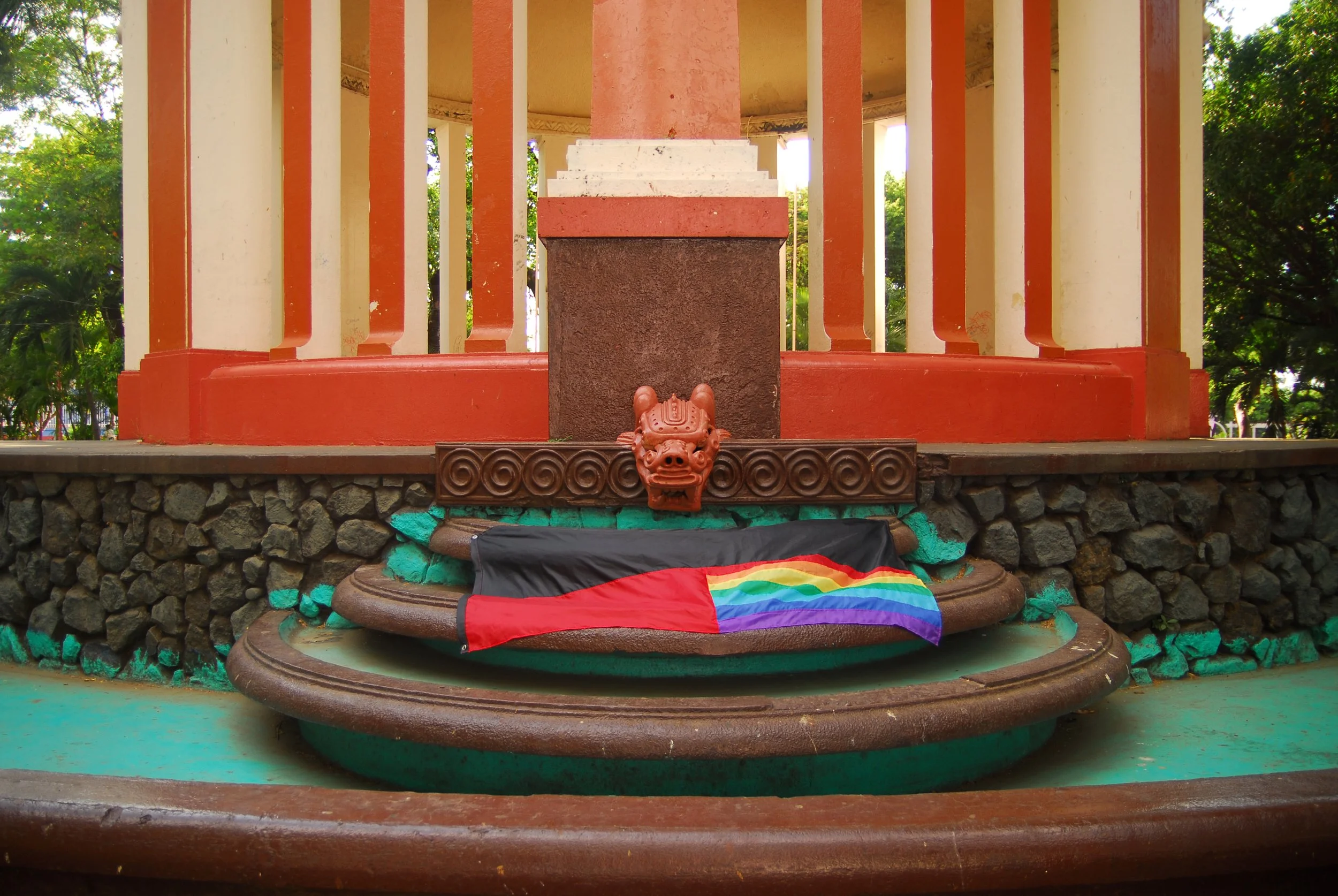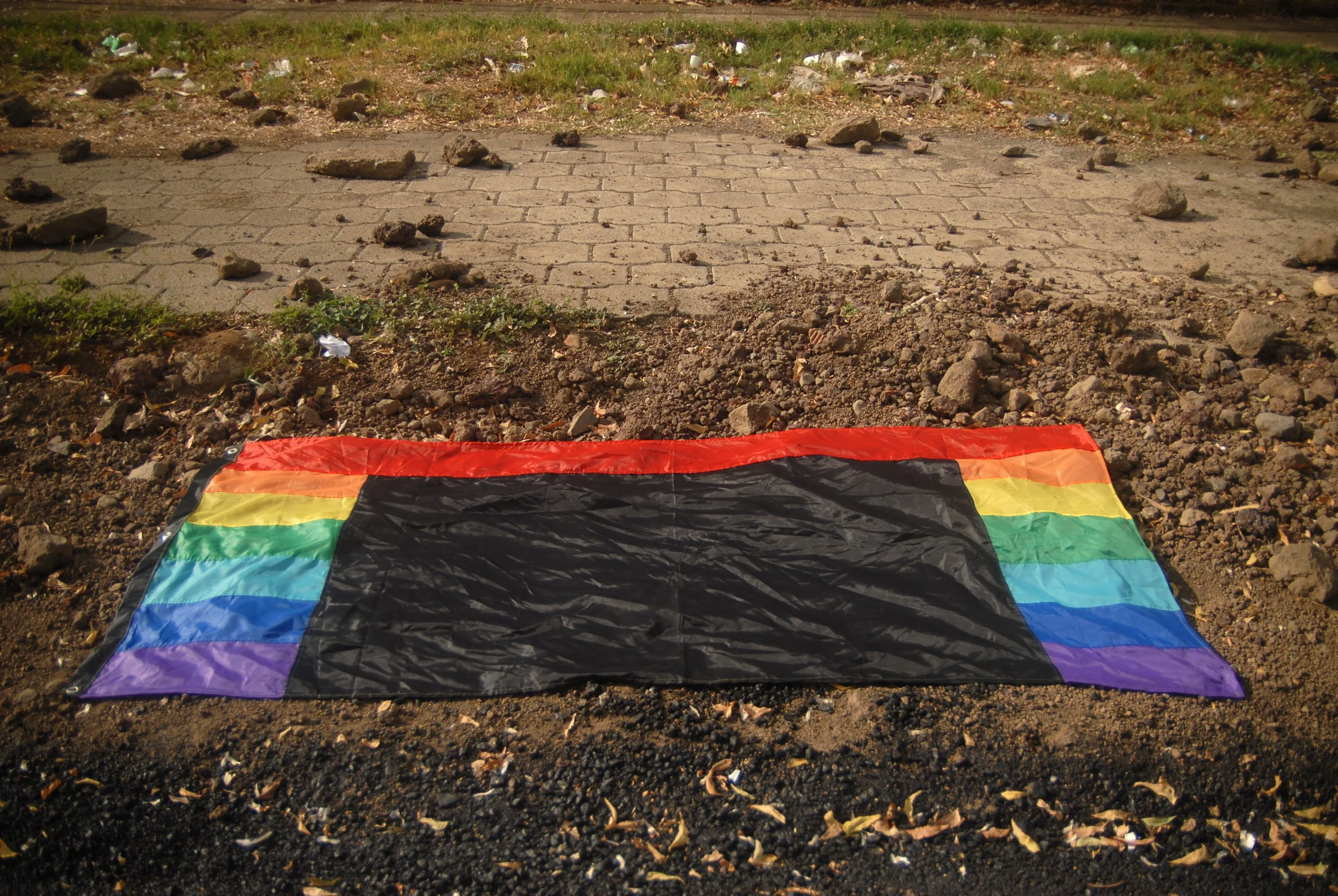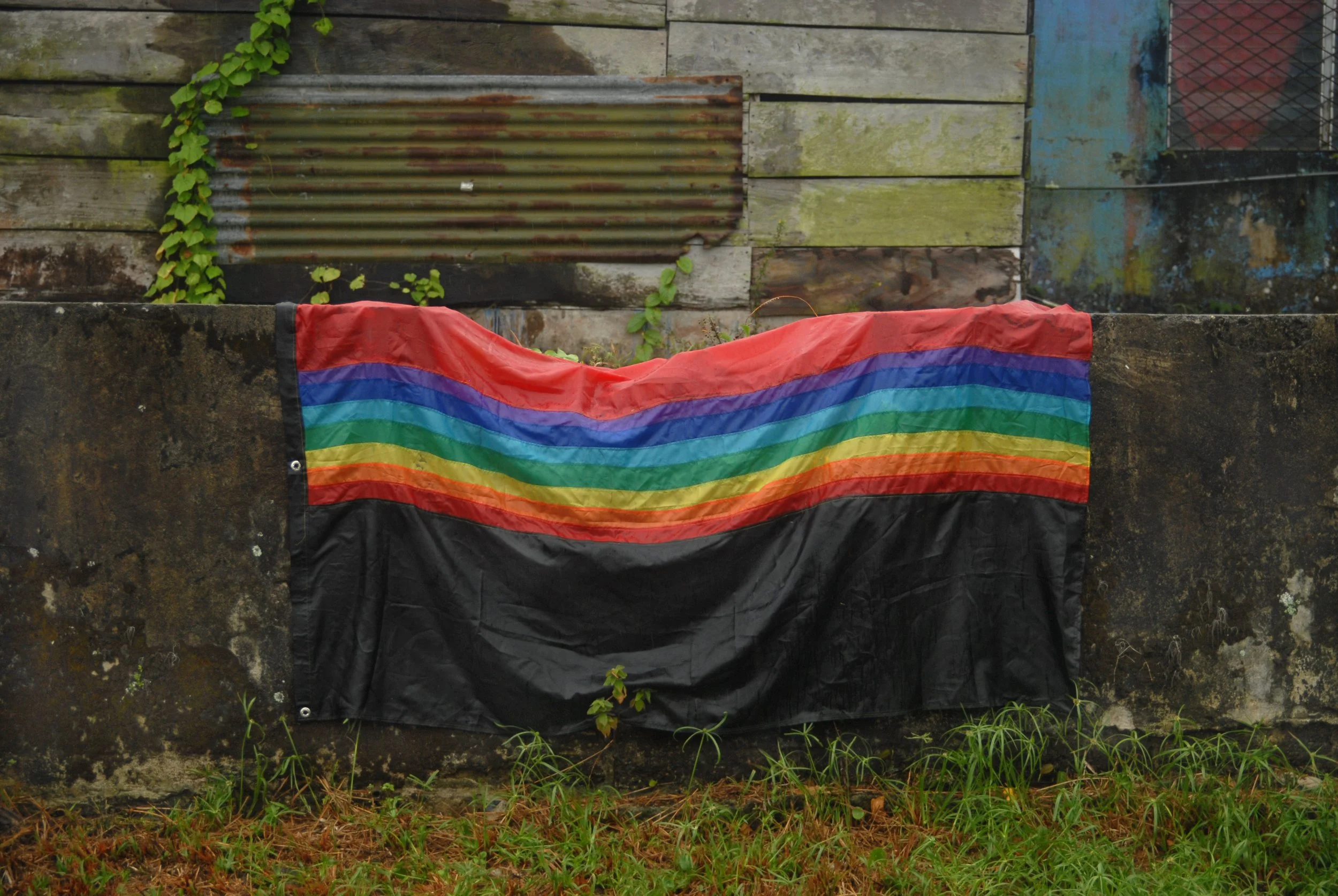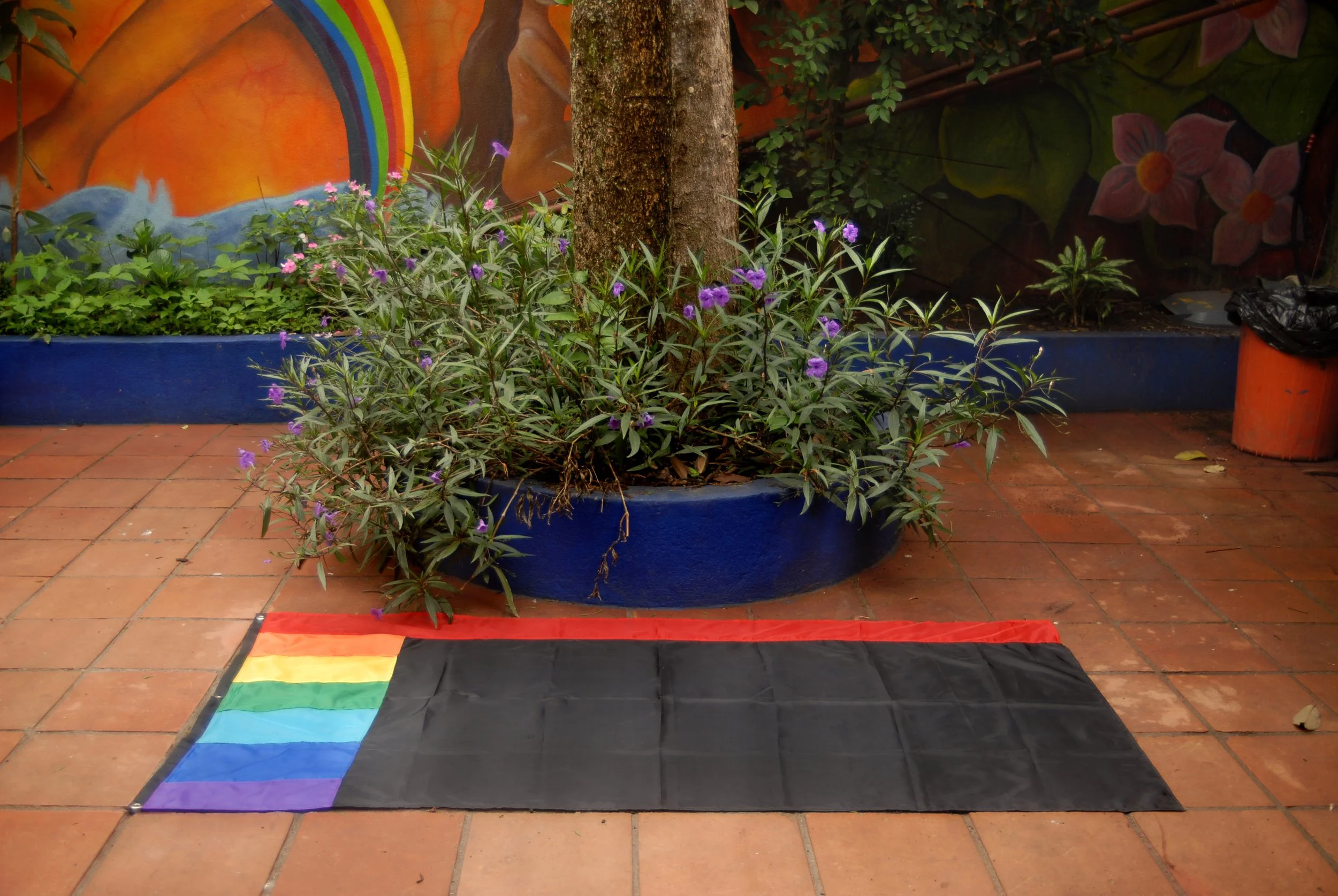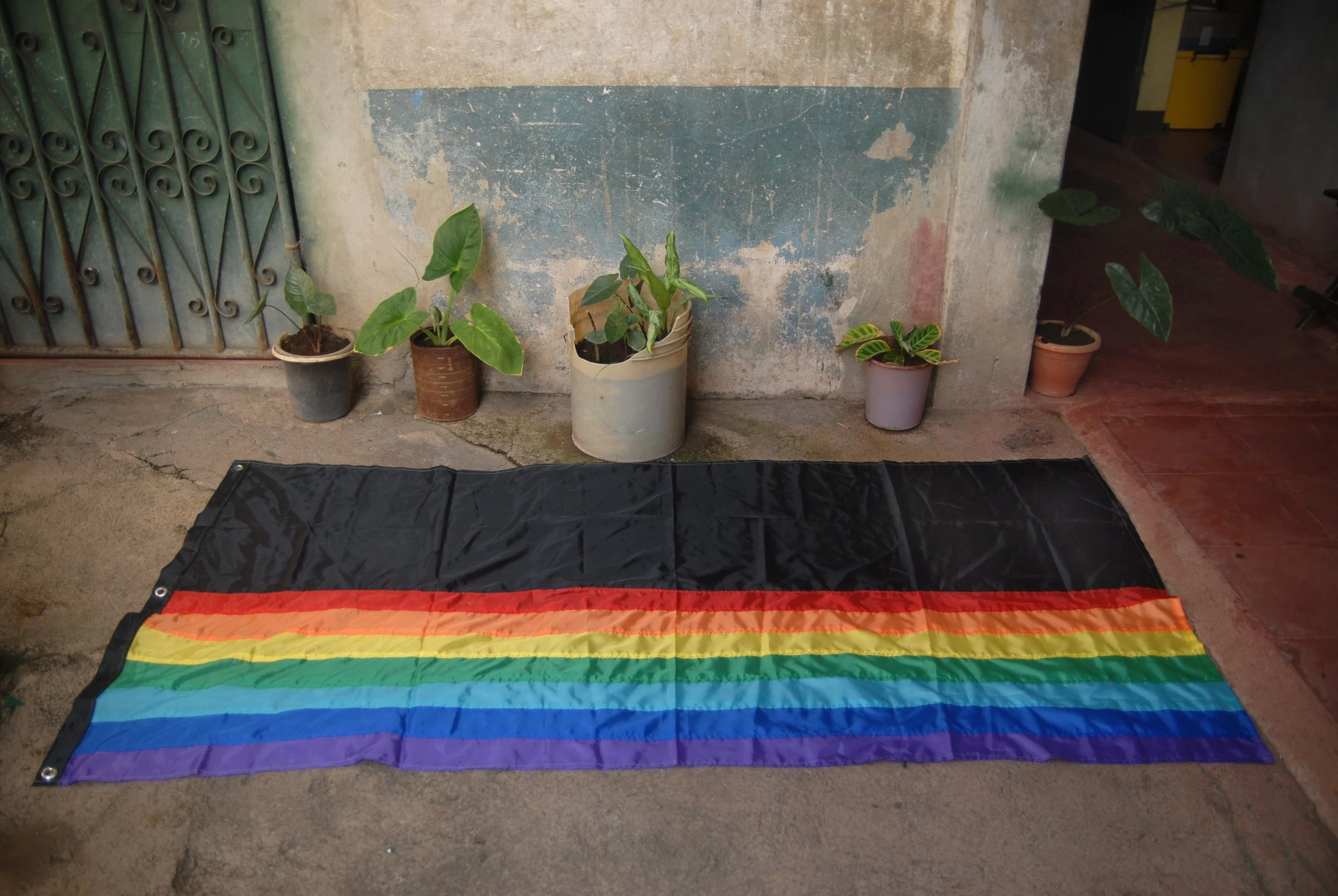BANDERAS
Ban_Deras is a collaborative project between Fredman Barahona and Christian Lord made for the Nicaragua Biennial. Ban_Deras a series of fictional flags which subvert the language of political propaganda and flag signage in the interest of representing the suppressed spectrum of experience between Revolutionary Sandinismo and queer identities. Often regarded as incompatible, this polarity comprises a wide spectrum of lived experience, which is often regarded as incongruous, frequently underrepresented, or completely undocumented. Eschewing the impulse to provide a single icon to
speak on behalf of this diverse community the artists designed sixteen different flags, which combine the Sandinista flag with the rainbow flag. The interplay in proportion between the black in the Sandinista flag and the shared red stripe of both flags suggests the ideological negotiation implicit in the combining of these two identities. In taking the project one step further, the artists photographed the flags at sites of cultural trauma, political protest and local queer establishments both as an intervention and basis for a forthcoming book entitled “(Ban)Deras” to be published in 2015.

